
How to Use Adafruit DS3502: Examples, Pinouts, and Specs
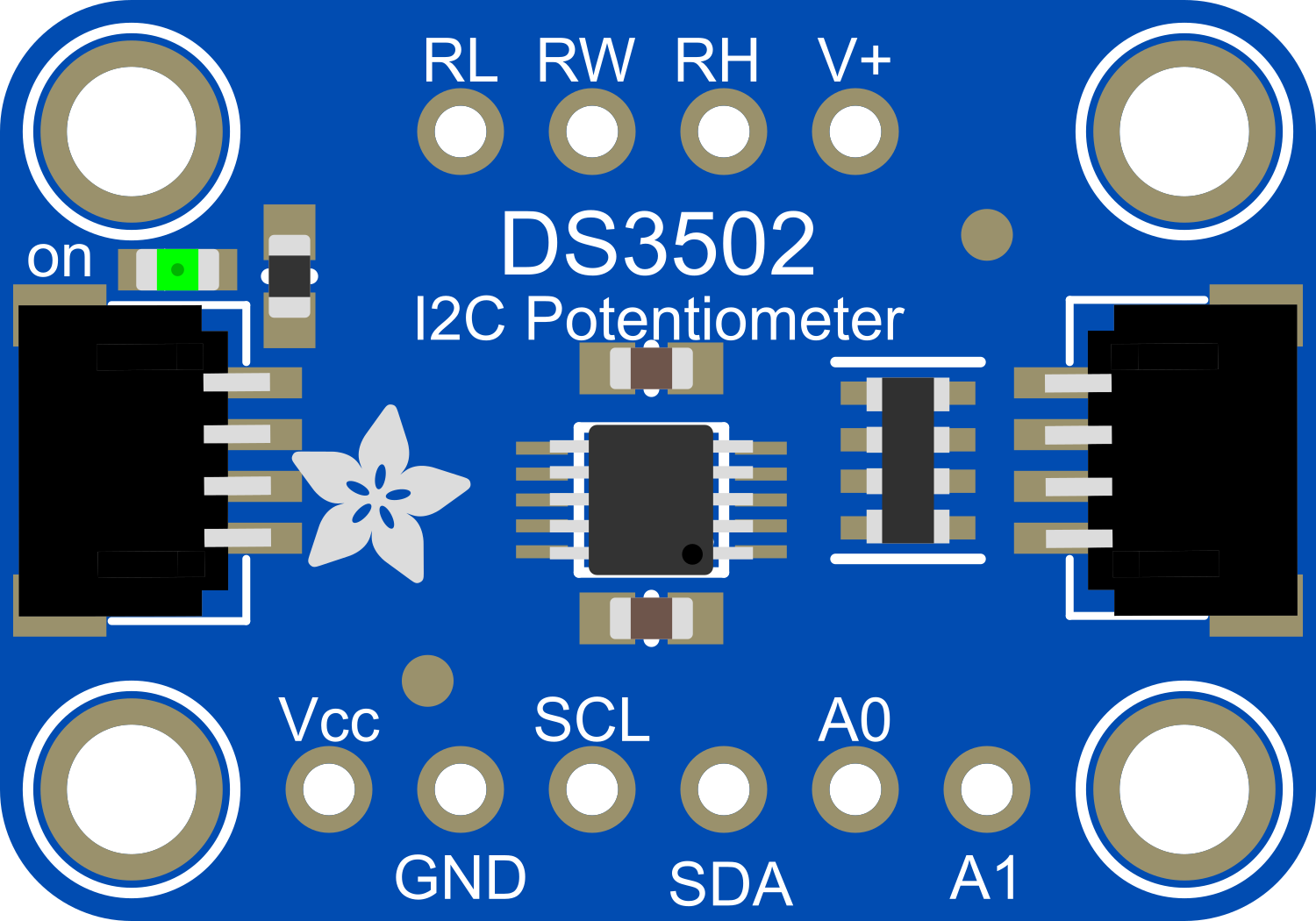
 Design with Adafruit DS3502 in Cirkit Designer
Design with Adafruit DS3502 in Cirkit DesignerIntroduction
The Adafruit DS3502 is a digital potentiometer, or "digipot," which provides a programmable resistance value across its two terminals. This component is ideal for applications requiring precise control of voltage, current, or signal amplitude. Common use cases include adjusting the brightness of LEDs, controlling the gain of an amplifier, or fine-tuning sensor inputs.
Explore Projects Built with Adafruit DS3502
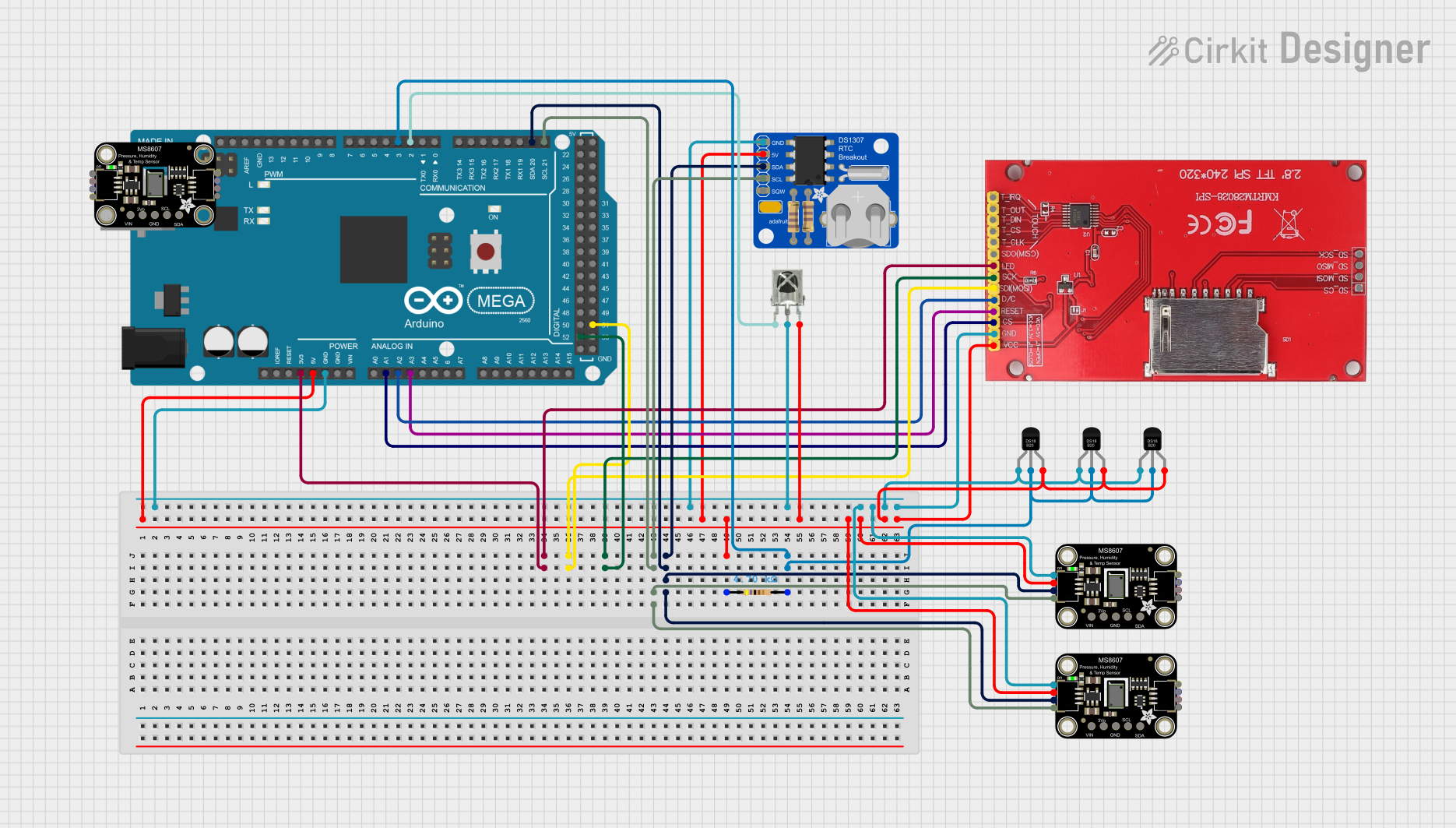
 Open Project in Cirkit Designer
Open Project in Cirkit Designer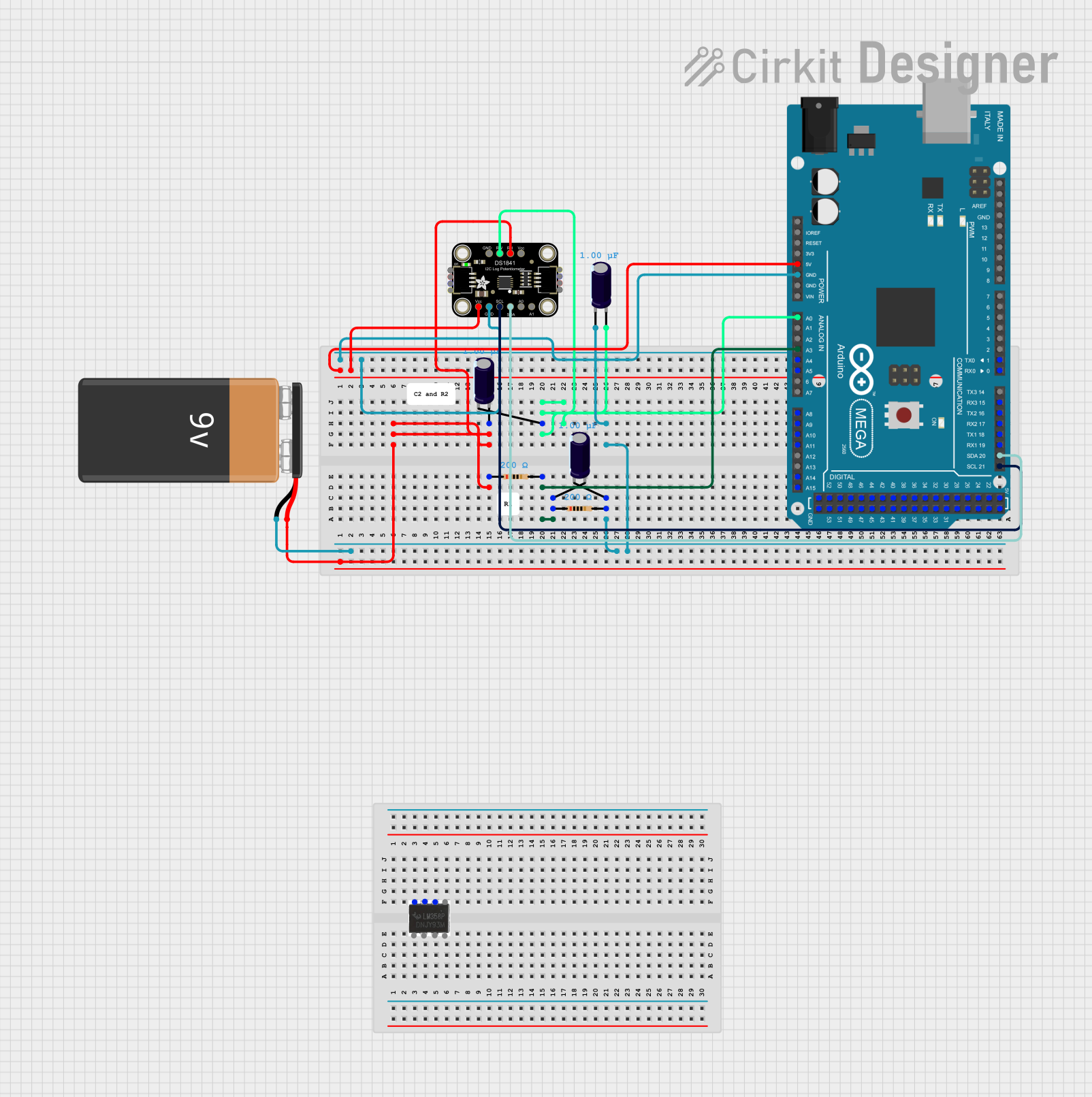
 Open Project in Cirkit Designer
Open Project in Cirkit Designer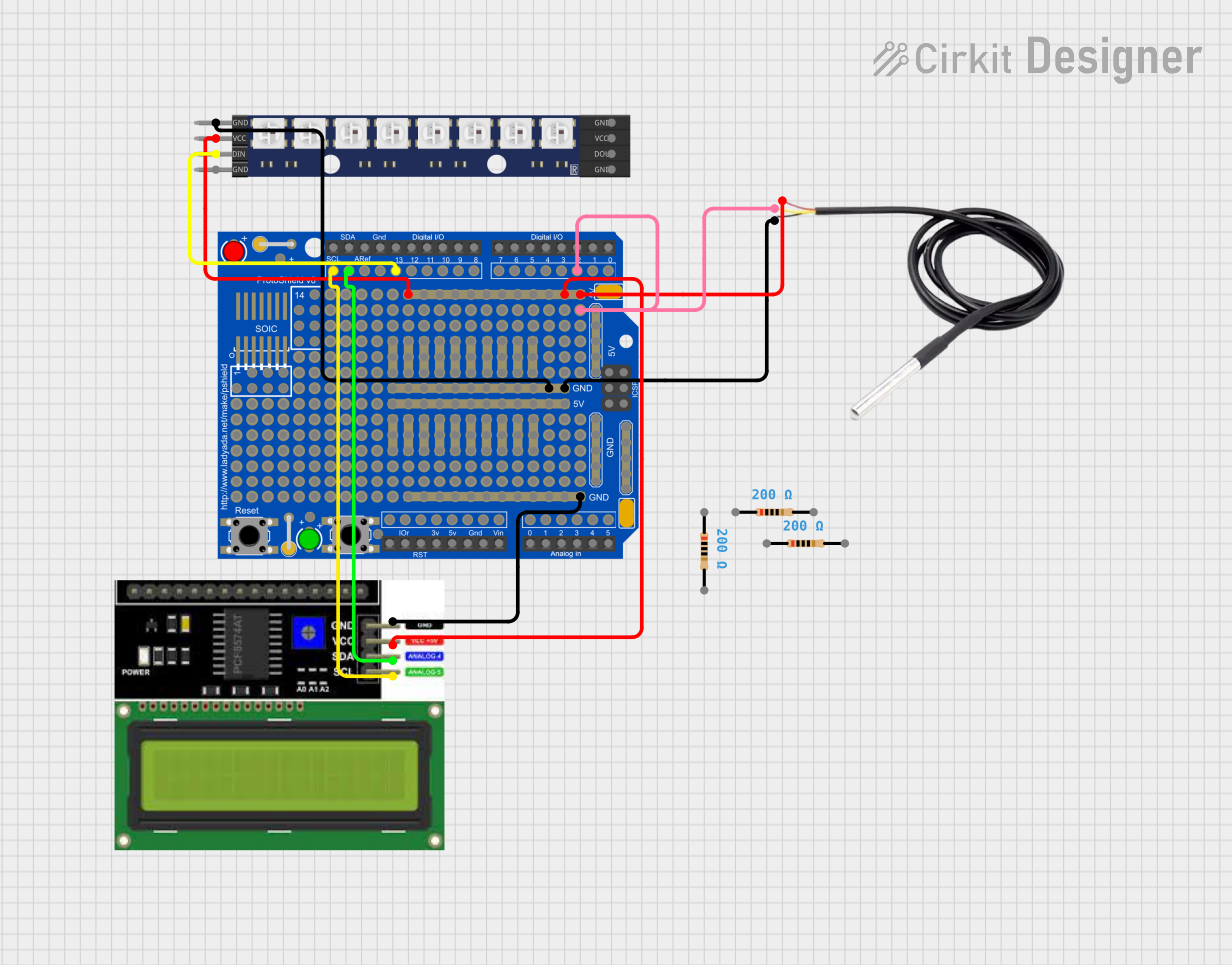
 Open Project in Cirkit Designer
Open Project in Cirkit Designer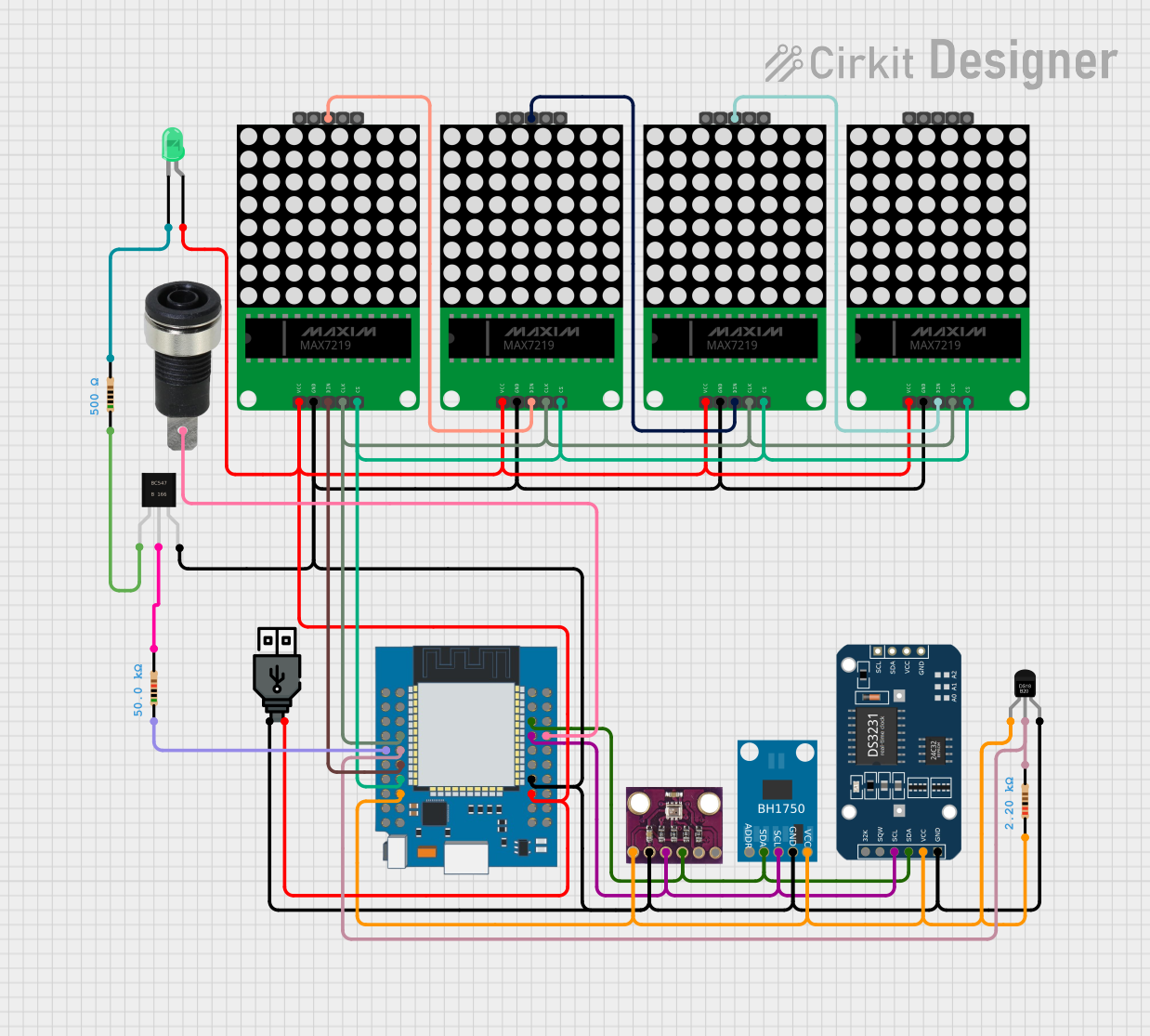
 Open Project in Cirkit Designer
Open Project in Cirkit DesignerExplore Projects Built with Adafruit DS3502

 Open Project in Cirkit Designer
Open Project in Cirkit Designer
 Open Project in Cirkit Designer
Open Project in Cirkit Designer
 Open Project in Cirkit Designer
Open Project in Cirkit Designer
 Open Project in Cirkit Designer
Open Project in Cirkit DesignerTechnical Specifications
Key Features
- Resistance Range: 10 kΩ
- Resolution: 256 steps (7-bit resolution)
- Interface: I²C-compatible serial interface
- Operating Voltage: 2.7V to 5.5V
- Temperature Range: -40°C to +85°C
- Non-volatile memory (EEPROM) stores the last position
Pin Configuration
| Pin Number | Name | Description |
|---|---|---|
| 1 | SCL | Serial Clock Line for I²C communication |
| 2 | SDA | Serial Data Line for I²C communication |
| 3 | A0 | Address pin for I²C address selection |
| 4 | W | Wiper terminal, the variable end of the potentiometer |
| 5 | L | Low terminal, the low end of the potentiometer |
| 6 | H | High terminal, the high end of the potentiometer |
| 7 | VDD | Power supply voltage (2.7V to 5.5V) |
| 8 | GND | Ground |
Usage Instructions
Connecting to a Circuit
- Connect VDD to your circuit's power supply (2.7V to 5.5V).
- Connect GND to the ground of your circuit.
- Connect SCL and SDA to the I²C clock and data lines, respectively.
- If multiple I²C devices are used, set the A0 pin to the appropriate logic level to determine the device's address.
- Connect the W, L, and H pins to your circuit where variable resistance is needed.
Best Practices
- Ensure that the power supply voltage does not exceed the maximum rating of 5.5V.
- Use pull-up resistors on the SCL and SDA lines for reliable I²C communication.
- Avoid applying a voltage to the W, L, or H terminals that exceeds VDD or is lower than GND.
- When using in an analog circuit, ensure that the signal voltage across the potentiometer does not exceed the power supply voltage.
Example Code for Arduino UNO
#include <Wire.h>
// DS3502 I2C address (depends on A0 pin connection)
const int DS3502_Address = 0x28;
// Command to set wiper position
const byte WIPER_REG = 0xA9;
void setup() {
Wire.begin(); // Join I2C bus
Serial.begin(9600); // Start serial communication for debugging
setWiperPosition(128); // Set wiper to mid-scale position
}
void loop() {
// Example: Cycle through all resistance positions
for (int position = 0; position < 256; position++) {
setWiperPosition(position);
delay(10); // Short delay between changes
}
}
void setWiperPosition(byte position) {
Wire.beginTransmission(DS3502_Address); // Begin transmission to DS3502
Wire.write(WIPER_REG); // Point to wiper register
Wire.write(position); // Set new wiper position
Wire.endTransmission(); // End transmission
// Debug output to serial monitor
Serial.print("Wiper position set to: ");
Serial.println(position);
}
Troubleshooting and FAQs
Common Issues
- I²C Communication Failure: Ensure that pull-up resistors are connected to the SCL and SDA lines. Check for correct wiring and that no other device on the I²C bus has a conflicting address.
- Unexpected Resistance Values: Verify that the wiper position has been correctly set in the software. Ensure that the DS3502 is not exposed to voltages outside its operating range.
FAQs
Q: Can the DS3502 be used with a microcontroller other than Arduino? A: Yes, the DS3502 can be interfaced with any microcontroller that supports I²C communication.
Q: How do I change the I²C address of the DS3502? A: The I²C address can be changed by connecting the A0 pin to either GND or VDD. This provides two possible addresses for the device.
Q: Is the DS3502 capable of handling power applications? A: The DS3502 is designed for low-power applications and should not be used in high-power circuits.
Q: How do I save the wiper position so it's retained after power cycling? A: The DS3502 automatically stores the last wiper position in its non-volatile memory when powered down.
For further assistance, consult the Adafruit DS3502 datasheet or contact technical support.